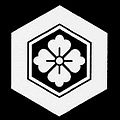Top Qs
Timeline
Chat
Perspective
Inuyama Domain
From Wikipedia, the free encyclopedia
Remove ads
The Inuyama Domain (犬山藩, Inuyama-han) was a feudal domain in Owari Province, Japan. It was not officially designated as a domain by the Tokugawa Shogunate, when major domains were established, but was finally designated a domain in 1868. The domain was controlled from Inuyama Castle, which is located in present-day Inuyama, Aichi Prefecture.



Remove ads
History
Summarize
Perspective
Ishikawa Mitsuyoshi, the daimyo of Inuyama Castle, who joined the West Army at the Battle of Sekigahara in 1600, was deprived of his fief, and instead, Matsudaira Tadayoshi the fourth son of Tokugawa Ieyasu, who joined the Kiyosu Domain, entered Owari with 520,000 koku. At this time, it was the beginning of Inuyama's territory that Ogasawara Yoshitsugu was given territory to Inuyama as the chief retainer of Tadayoshi. In 1607, Yoshitsugu was transferred to the Shimosa Sakura Domain. In this year, in the Kiyosu Domain, the daimyo of the domain, Tadayoshi, died of illness without an heir, and the Kiyosu Domain became a uninusted and kaieki. After that, Ieyasu's ninth son, Tokugawa Yoshinao, ruled Owari as the lord of the Owari Domain, and Hiraiwa Chikakichi, a senior vassal of the Tokugawa clan, entered Inuyama Castle with 113,000 koku (93,000 koku according to one theory) as Yoshinao's chief retainer. However, in 1611, Chikayoshi died of illness without an heir, and according to his will, his territory was absorbed by the Owari Domain (however, in the history of the Inuyama Domain, Hiraiwa Yoshinori succeeded Chikayoshi and ruled until 1617).
In 1617, Naruse Masashige, a chief retainer of Yoshinao, entered with 30,000 koku, and Naruse Inuyama, who assisted the Owari Domain, was established here. In 1659, when the third head of the family, Naurse Masachika, he ruled a total of 35,000 koku with an increase of 5,000 koku, and became a senior vassal who ruled the largest chigyo of the Owari Domain. In addition, Inuyama Castle was developed under the reign of Yoshitsugu, and the castle town and castle were maintained, and it is considered to be a national treasure as a castle with the oldest keep. In January 1868, due to the new government's Ishin-Ritsuhan, the Inuyama Naruse clan officially became the lord of the Inuyama Domain and became independent from the Owari Domain of the Owari Tokugawa clan. In 1869, the final daimyo of the domain, Naruse Masamitsu, was appointed as the governor of the Inuyama Domain due to the return of lands and people.
On July 14, 1871 the Inuyama Domain became Inuyama Prefecture, and on November 22, it was merged into Nagoya Prefecture (based on the Owari Domain). Later, after the name of this Nagoya Prefecture was renamed Aichi Prefecture, Nukata Prefecture (former Mikawa Province and former Chita County, Owari Province) were merged.
Remove ads
Holdings at the end of the Edo period
- Owari Province
- Aichi County - 3 villages
- Kasugai-gun - 6 villages
- Niwa County - 33 villages
- Haguri County - 1 village
- Nakajima-gun - 4 villages
- Kaito County
- Kaisai County - 1 village
- Chita County - 4 villages
- Mino Province
- Nakajima County - 3 villages
- Tage County - 1 village
- Anpachi County - 2 villages
List of daimyo
Summarize
Perspective
The Inuyama Domain was controlled by three families: Ogasawara, Hiraiwa, and Naruse.
See also
Wikiwand - on
Seamless Wikipedia browsing. On steroids.
Remove ads

